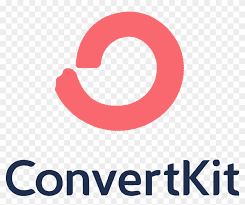Choosing the right landing page tool can feel like trying to pick the best ice cream flavor on a hot day. They all look good, but you know deep down, there’s one that will hit the spot perfectly. Today, we’re diving into a sweet comparison between two popular options in the digital marketing world: Wishpond and ConvertKit. Whether you’re a small business owner, a digital marketer, or someone just getting their feet wet in the world of online marketing, this guide is crafted with you in mind. Let’s find out which tool will help you scoop up more leads, convert more customers, and ultimately, make your digital marketing efforts as satisfying as that perfect cone of ice cream.
| Wishpond | ConvertKit Landing Pages |
|---|---|
 |  |
| G2 Score – 3.7 out of 5 stars | G2 Score – 4.4 out of 5 stars |
| TrustRadius Score – 1.8/10 | TrustRadius Score – 8.8/10 |
The Ease of Use
Simplifying the Process
When you’re juggling a million tasks, the last thing you want is a landing page builder that feels like solving a Rubik’s cube. Let’s talk about how user-friendly Wishpond and ConvertKit really are, because, let’s face it, simplicity is the new sophistication.
Wishpond: Drag, Drop, Done
Wishpond is like that friend who makes everything look effortless. The platform’s interface is clean and intuitive, making it a breeze for anyone, regardless of technical expertise, to create stunning landing pages. With a drag-and-drop editor at its core, Wishpond eliminates the need for coding skills. It’s like playing with Lego blocks; you pick what you need and place it where it belongs.
One of the features that stand out is the variety of templates. Whether you’re launching a product, running a giveaway, or just looking to gather email sign-ups, Wishpond has a template for that. Each template is designed with conversion in mind, ensuring that aesthetics don’t overshadow functionality.
Customization is another area where Wishpond shines. You can easily tweak colors, fonts, and images to match your brand’s identity, making your landing page feel like a natural extension of your website. Plus, with the ability to add elements like forms, pop-ups, and social media buttons, enhancing engagement on your page is as simple as pie.
ConvertKit: Writers’ Paradise
ConvertKit, on the other hand, approaches landing page creation with content creators in mind. It’s straightforward and no-frills, which is great news for bloggers, authors, and podcasters looking to grow their audience. The platform offers a clean, minimalist editor that makes it easy to focus on what truly matters: your content.
Templates in ConvertKit are beautifully designed yet simple, ensuring that your message takes center stage. Though the customization options are not as extensive as Wishpond’s, there’s enough flexibility to inject your personality into your pages. This focus on content over design makes ConvertKit a powerful tool for creators who prioritize substance.
ConvertKit’s strength lies in its seamless integration with email marketing. Building your landing page is just the start; the platform makes it incredibly easy to connect with your audience through targeted campaigns. For content creators, this means less time fiddling with tech and more time doing what they love: creating.
Features and Functionalities
When you’re in the market for a landing page builder, it’s not just about creating a page; it’s about crafting a comprehensive marketing funnel that engages your audience at every step. Both Wishpond and ConvertKit understand this, but they approach it in slightly different ways.
Wishpond’s Feature Set
Wishpond doesn’t hold back when it comes to features. It’s a full-suite marketing solution that offers a plethora of tools aimed at capturing leads, nurturing them, and converting them into loyal customers. Beyond just landing pages, Wishpond includes email marketing capabilities, contest and promotion tools, lead tracking, and analytics. This extensive feature set is designed to offer businesses everything they need to execute their marketing strategies under one roof.
One of the standout features is its integrations. Wishpond makes it easy to connect with a wide array of third-party applications and services, including CRM systems, payment processors, and social media platforms. This interoperability is key for businesses that rely on a variety of tools to manage their operations and marketing efforts.
Moreover, Wishpond puts a strong emphasis on lead generation and management. Its tools are designed to help you capture leads at every opportunity, segment them effectively, and engage with them through personalized, automated campaigns. This holistic approach to lead management can be a game-changer for businesses focused on building and nurturing a strong customer base.
ConvertKit’s Feature Set
ConvertKit, while initially focused on email marketing, has expanded its offerings to include landing pages with a clear goal in mind: simplicity and effectiveness for creators. The platform’s features are tailored to help bloggers, podcasters, and other content creators grow their audience and monetize their content.
While ConvertKit might seem more streamlined in comparison to Wishpond, it excels in what it does offer. Its email marketing tools are robust, featuring automation, tagging, and segmentation that allow for highly targeted communication. When it comes to landing pages, ConvertKit offers enough customization to create beautiful, conversion-optimized pages without overwhelming the user with too many options.
One area where ConvertKit really shines is in its approach to audience growth and engagement. The platform provides detailed insights into subscriber behavior, helping you understand what resonates with your audience. This focus on engagement and growth, combined with its ease of use, makes ConvertKit an attractive option for content creators looking to expand their reach without getting bogged down by complex marketing tools.
Customer Support and Resources
Both Wishpond and ConvertKit recognize the importance of support and education in empowering users to make the most of their services. However, the approach and offerings of each platform in this regard can vary, impacting how users experience and navigate challenges that may arise during their marketing campaigns.
Wishpond’s Support and Educational Offerings
Wishpond places a strong emphasis on providing comprehensive support and resources to its users. The platform offers multiple channels for customer support, including live chat, email, and phone support, ensuring that users can reach out and receive assistance in a manner that suits their preferences. This multi-channel approach is particularly beneficial for addressing urgent issues or complex queries that may require detailed guidance.
In addition to its support services, Wishpond also offers an extensive library of educational resources. This includes a knowledge base filled with articles, tutorials, and guides that cover every aspect of using the platform, from setting up your first landing page to optimizing your marketing campaigns for better conversions. Wishpond also hosts webinars and provides access to a community of users, where you can share experiences, ask questions, and learn from the successes (and mistakes) of others. This wealth of resources is invaluable for both new and experienced users looking to deepen their understanding of digital marketing practices and leverage Wishpond’s full potential.
ConvertKit’s Approach to Support and Resources
ConvertKit, much like Wishpond, understands the importance of support and has tailored its offerings to meet the needs of its primarily creator-focused audience. ConvertKit offers email support and a vast knowledge base that includes detailed guides, tutorials, and FAQs designed to help users navigate the platform’s features and functionalities with ease. While ConvertKit’s focus on email support might seem limiting compared to Wishpond’s multi-channel approach, the quality of assistance provided is high, with responsive and knowledgeable support staff.
Where ConvertKit truly shines is in its educational resources tailored specifically for creators. The platform provides an array of resources aimed at helping users grow their audience and monetize their content effectively. This includes workshops, courses, and articles focused on content creation, email marketing strategies, and audience engagement. ConvertKit’s commitment to educating its users goes beyond just platform usage; it extends into broader strategies for building successful online businesses or creator careers.

Related: Check out our free SEO suite

Integration Capabilities
The richness of a platform’s integration ecosystem can greatly influence its utility and effectiveness. Whether it’s CRM software, analytics tools, social media platforms, or email marketing services, the ease with which these integrations are implemented can make or break the user experience. Here’s how both platforms stand in terms of integration capabilities.
Wishpond’s Integration Ecosystem
Wishpond boasts a broad array of integrations with over 300 services, covering a wide range of categories that are crucial for marketing and sales efforts. This extensive integration network includes CRM systems like Salesforce and HubSpot, email marketing tools such as Mailchimp and Constant Contact, payment gateways like Stripe and PayPal, and social media platforms including Facebook and Twitter. Such diversity ensures that businesses can connect Wishpond with the tools they already use, facilitating a seamless workflow that does not disrupt existing operations.
One of the key strengths of Wishpond’s integration capabilities lies in its flexibility. The platform supports direct integrations, Zapier connections for tools that do not have a direct integration, and even custom API access for businesses with the technical know-how to build their own integrations. This level of flexibility is particularly beneficial for businesses that rely on a bespoke set of tools or those that require a high degree of customization in their marketing stack.
ConvertKit’s Approach to Integrations
ConvertKit, while offering a narrower scope of direct integrations compared to Wishpond, focuses on providing seamless connectivity with tools that are most relevant to its core audience of creators and online entrepreneurs. The platform integrates with popular services including Shopify for eCommerce, WordPress for content management, LeadPages for additional landing page designs, and Patreon for membership and subscription-based businesses. ConvertKit’s integration strategy is tailored to enhance the workflows of bloggers, podcasters, and digital creators, ensuring they can connect their email marketing and landing page efforts with other key aspects of their online presence.
Notably, ConvertKit also facilitates integrations through Zapier, enabling users to connect with thousands of other apps and services indirectly. This Zapier support significantly expands the potential integration landscape, allowing for creative and highly customized marketing automation workflows. Furthermore, ConvertKit offers a developer-friendly API, empowering users with development resources to craft custom integrations, thus increasing the versatility of the platform in meeting specific business needs.
Pricing and Value
The right landing page tool should not only fit your marketing needs but also align with your budget constraints. Both Wishpond and ConvertKit offer various pricing tiers to cater to different types of users, from solo creators to larger enterprises. However, the way they structure their plans and the features they offer at each price point can vary greatly.
| Wishpond | Pricing for Wishpond starts with a basic plan typically around $49 per month when billed annually, offering unlimited landing pages, social contests, and email campaigns. For more advanced features and higher limits, the prices increase, with custom pricing available for larger businesses needing comprehensive marketing solutions. |
| ConvertKit | ConvertKit allows users to create landing pages for free, aiming at helping creators grow their audience without initial investment. For more advanced automation, integration, and support features, their pricing starts at $9 per month for the Creator plan when billed annually. |
Wishpond’s Pricing Structure
Wishpond adopts a tiered pricing strategy, offering several plans that scale with the features and the number of leads you can manage. This flexibility ensures that businesses of all sizes can find a plan that suits their requirements. The starting plan is reasonably priced, making Wishpond accessible to smaller businesses and startups. However, as you move up the tiers to unlock more advanced features and higher lead capacities, the cost increases significantly.
One of the standout aspects of Wishpond’s pricing is the breadth of features included even in its more basic plans. This means that even at lower price points, users can access a robust set of tools that cover not just landing pages but also email marketing, lead management, and more. Additionally, Wishpond offers custom plans for businesses with specific needs, providing a level of flexibility that’s appreciated by larger organizations or those with unique marketing strategies.
ConvertKit’s Pricing Approach
ConvertKit, on the other hand, takes a slightly different approach to pricing. It offers a free plan with basic features, designed to help new creators get started without any upfront investment. This free plan includes access to landing pages and email marketing tools, albeit with some limitations in terms of automation and advanced features. As you move up to the paid plans, these limitations are lifted, and additional functionalities become available.
ConvertKit’s pricing is largely based on the number of subscribers, making it straightforward for users to choose the right plan based on their audience size. This model is particularly beneficial for content creators and small businesses whose primary concern is managing and growing their subscriber list. The pricing is competitive, and the value proposition is clear: ConvertKit aims to provide all the essential tools a creator needs to engage their audience and drive conversions.
Conclusion
Wishpond stands out as a robust, all-in-one marketing solution designed for businesses looking for a comprehensive suite of tools to manage and optimize their digital marketing efforts. With its extensive feature set, flexible pricing plans, multi-channel customer support, and a wealth of educational resources, Wishpond is ideally suited for businesses that require a wide range of marketing functionalities and support to drive their campaigns.
On the other hand, ConvertKit offers a streamlined, effective platform focused on helping creators and small businesses grow their audience and monetize their content. With its emphasis on ease of use, targeted features, creator-focused educational resources, and straightforward pricing based on subscriber count, ConvertKit is an excellent choice for bloggers, podcasters, and other content creators prioritizing audience engagement and growth.
Read Next:
- Twitter and Its SEO Implications for Financial Brands
- LinkedIn SEO Strategies for Financial Professionals
- How Social Signals Impact Financial Services SEO
- SEO ROI Calculation for Financial Institutions
- 31+ Top Social Media Management tools Compared! (2023)






















Comments are closed.